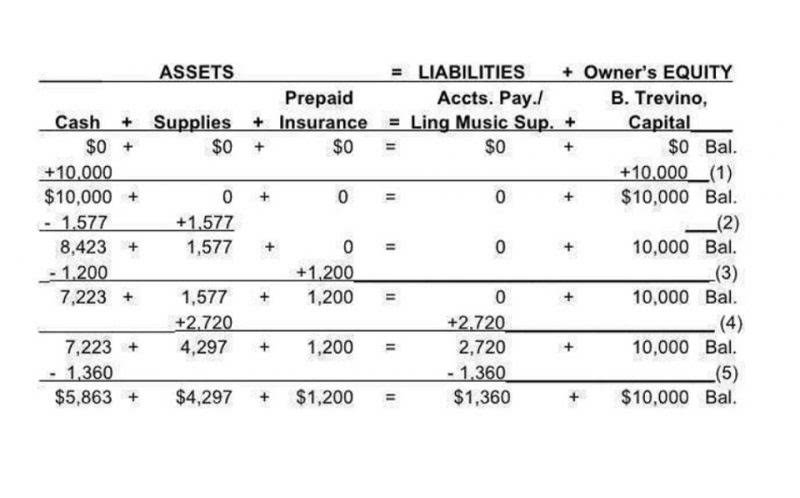
This can require a significant amount of additional research work. Posting in accounting is when the balances in subledgers and the general journal are shifted into the general ledger. Posting Accounting Periods and Methods only transfers the total balance in a subledger into the general ledger, not the individual transactions in the subledger.
What Does Posting Journal Entries Mean?
Let’s say a company has $3,000 worth of rent expenses per month that needs to be posted for the annual general ledger. A subsidiary ledger would contain details of the rent expenses, including a line item per month debited in “Rent” and credited in “Accounts Payable”. This sounds like a lot of work, but it’s necessary to keep an accurate record of business events. You can think of this like categorizing events into specific and broader relevant groupings. For example, journals are transferred to subsidiary ledgers then transferred to the general ledger.
- Following proper separation of duties helps the posting process work smoothly, according to University of Florida’s guidelines.
- Debits are always posted on the left side of the t account while credits are always posted on the right side.
- It serves as a check and balance to ensure each transaction has been posted to the appropriate account.
- Note that modern accounting programs handle the posting of journal entries to the ledger automatically.
- Once journal entries are made in the general journal or subsidiary journals, they must be posted and transferred to the T-accounts or ledger accounts.
How Accounts are Numbered in Accounting

Timely posting is paramount in maintaining the accuracy and reliability of financial records. Delays in posting can lead to a cascade of issues, including inaccurate financial statements and difficulties in account reconciliation. Ledgers serve as the backbone of the accounting system, acting as the repository where all financial transactions are systematically recorded.

What is the General Ledger?
After almost a https://www.bookstime.com/ decade of experience in public accounting, he created MyAccountingCourse.com to help people learn accounting & finance, pass the CPA exam, and start their career. Chartered accountant Michael Brown is the founder and CEO of Double Entry Bookkeeping. He has worked as an accountant and consultant for more than 25 years and has built financial models for all types of industries.
- After events are identified, they can be record in the general journal with a journal entry.
- The information in the general ledger is then aggregated into a set of financial statements for each reporting period.
- Posting is also used when a parent company maintains separate sets of books for each of its subsidiary companies.
- He has been a manager and an auditor with Deloitte, a big 4 accountancy firm, and holds a degree from Loughborough University.
- In a manual bookkeeping environment, the aggregation may occur at fixed intervals, such as once a day or once a month.
There may be a subsidiary set of ledgers that summarize into the general ledger. The general ledger, in turn, is used to aggregate information into the financial statements of a business. At the end of the accounting period, these items would be consolidated and posted into one line item in the general ledger.
- Initially, transactions that are completed in volume are usually recorded in a specialty ledger, such as the sales ledger.
- In the monthly closing, adjustments and entries are posted to the ledger.
- This system allows accountants and bookkeepers to easily track account balances and spot errors in journal entries.
- Real-time data processing allows for up-to-date financial records, facilitating timely decision-making.
- This can require a significant amount of additional research work.
They provide a structured way to organize financial data, ensuring that every transaction is accurately reflected in the company’s financial statements. By categorizing transactions into specific accounts, ledgers facilitate a clear and comprehensive view of an organization’s financial activities. In contrast to the two-sided T-account, the three-column ledger card format has columns for debit, credit, balance, and item description. The three-column form ledger card has the advantage of showing the balance of the account after each item has been posted. It is posting in accounting very important for you to understand the debit and credit rules for each account type or you may not calculate the balance correctly.
A Few Things Before We Start

Yes, posting must follow Generally Accepted Accounting Principles (GAAP). Following these principles builds trust in a company’s financial health. The posting references in a journal are normally to documents supporting the transaction and the general ledger account codes. In the General Journal, when an account has been posted to an individual account, the number assigned to that account is listed in the Post Ref column to indicate that entry has been posted. In the General Ledger, for the corresponding transaction, the page number of the General Journal is entered to signify the page where the transaction can be found.

T-Account Debits and Credits
The ledger contains accounts for all items listed in the accounting equation, i.e. assets, liabilities and equity. Of course equity includes capital, revenue, expenses, gains, losses, drawings, and retained earnings, so the ledger must at least include GL account codes for each of these groups. Again, the company received cash so we increase it by debiting Cash. We will record it by crediting the liability account – Loans Payable.


Leave a Reply